#book reference
Text
handmade drawing references :)

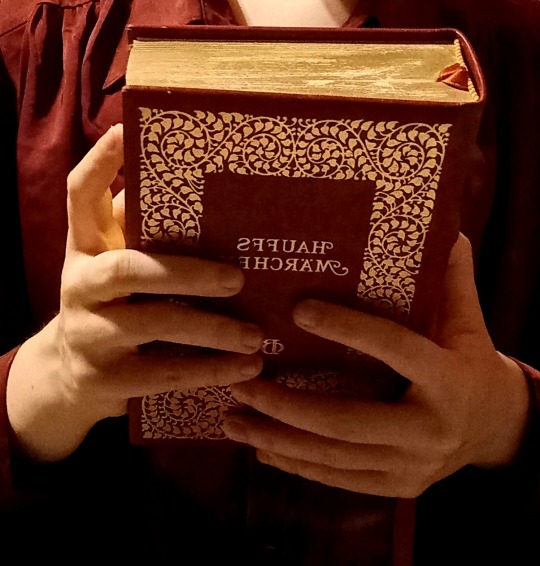
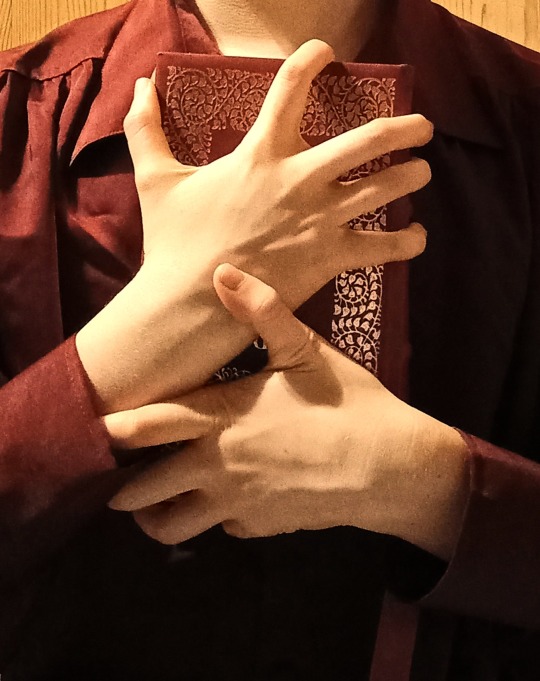
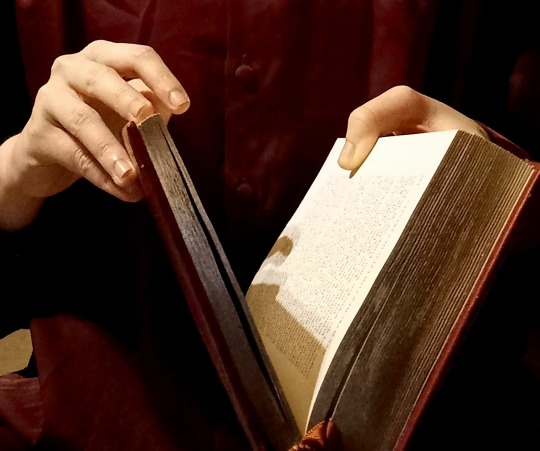



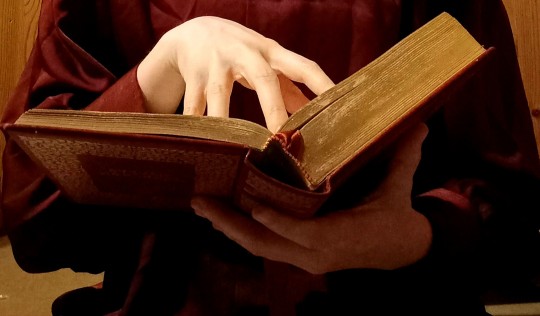
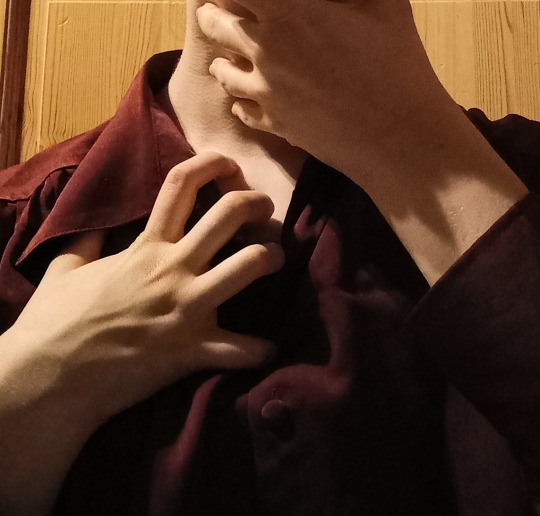
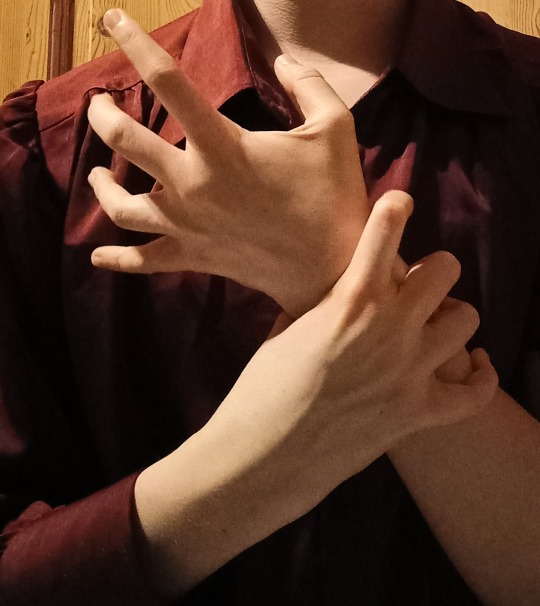


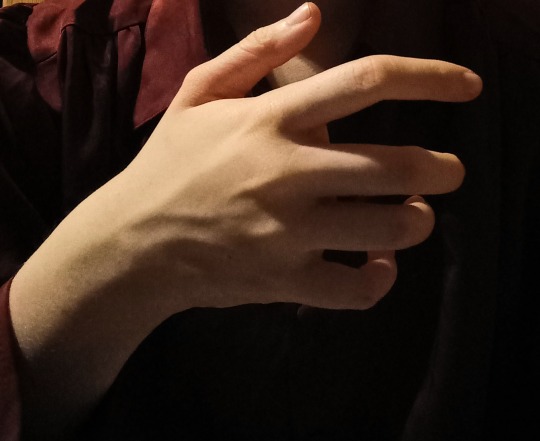



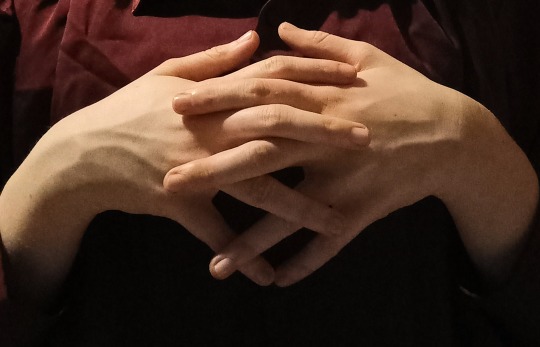

I took these pictures mainly to analyze my hand structure. Feel free to use them for your art, if you'd like to!
#hands#hand#book#books#reference#references#art reference#drawing reference#reference material#hand reference#book reference#reference photos#pose#poses
28K notes
·
View notes
Text
so I am just saying
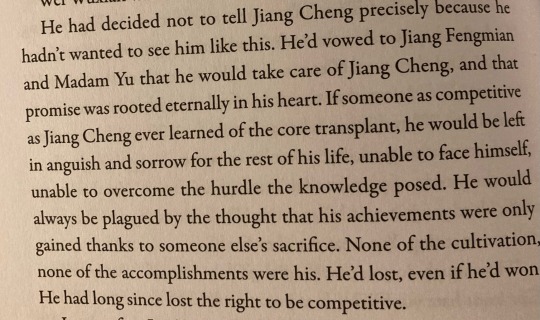
this is in fact… not what happens (go away donghua). he pulls himself together and fights for Jin Ling’s position and like… continues with his life.
it’s almost as if Wei Wuxian’s assessments of people’s characters are not always (or perhaps even often) entirely correct!!!!
I’m also just so struck this time about how the evasiveness is all on the part of Wei Wuxian, and is explicitly about no longer having the resilience to face the trauma of the core transfer and its repercussions. you might say he’s…… unable to face himself……..
finally:

WEI WUXIAN PLEASE JUST PAY A LITTLE MORE ATTENTION AND NOTICE WHO HE LEFT OFF THAT LIST
685 notes
·
View notes
Text

new year, new me
#time for a#metamorphosis#if you will#franz kafka#kafka's metamorphosis#the metamorphosis#books#book reference#classic#about meme#new year#2023#kafka meme#kafkaesque#my memes
292 notes
·
View notes
Text
A class on fairy tales (1)
As you might know (since I have been telling it for quite some times), I had a class at university which was about fairy tales, their history and evolution. But from a literary point of view - I am doing literary studies at university, it was a class of “Literature and Human sciences”, and this year’s topic was fairy tales, or rather “contes” as we call them in France. It was twelve seances, and I decided, why not share the things I learned and noted down here? (The titles of the different parts of this post are actually from me. The original notes are just a non-stop stream, so I broke them down for an easier read)
I) Book lists
The class relied on a main corpus which consisted of the various fairytales we studied - texts published up to the “first modernity” and through which the literary genre of the fairytale established itself. In chronological order they were: The Metamorphoses of Apuleius, Lo cunto de li cunti by Giambattista Basile, Le Piacevoli Notti by Giovan Francesco Straparola, the various fairytales of Charles Perrault, the fairytales of Marie-Catherine d’Aulnoy, and finally the Kinder-und Hausmärchen of Jacob and Wilhelm Grimm. There is also a minor mention for the fables of Faerno, not because they played an important historical role like the others, but due to them being used in comparison to Perrault’s fairytales ; there is also a mention of the fairytales of Leprince de Beaumont if I remember well.
After giving us this main corpus, we were given a second bibliography containing the most famous and the most noteworthy theorical tools when it came to fairytales - the key books that served to theorize the genre itself. The teacher who did this class deliberatly gave us a “mixed list”, with works that went in completely opposite directions when it came to fairytale, to better undersant the various differences among “fairytale critics” - said differences making all the vitality of the genre of the fairytale, and of the thoughts on fairytales. Fairytales are a very complex matter.
For example, to list the English-written works we were given, you find, in chronological order: Bruno Bettelheim’s The Uses of Enchantment ; Jack David Zipes’ Fairy Tales and the Art of Subversion ; Robert Bly’s Iron John: A Book about Men ; Marie-Louise von Franz, Interpretation of Fairy Tales ; Lewis C. Seifert, Fairy Tales, Sexuality and Gender in France (1670-1715) ; and Cristina Bacchilega’s Postmodern Fairy Tales: Gender and Narrative Strategies. If you know the French language, there are two books here: Jacques Barchilon’s Le conte merveilleux français de 1690 à 1790 ; and Jean-Michel Adam and Ute Heidmann’s Textualité et intertextualité des contes. We were also given quite a few German works, such as Märchenforschung und Tiefenpsychologie by Wilhelm Laiblin, Nachwort zu Deutsche Volksmärchen von arm und reich, by Waltraud Woeller ; or Märchen, Träume, Schicksale by Otto Graf Wittgenstein. And of course, the bibliography did not forget the most famous theory-tools for fairytales: Vladimir Propp’s Morfologija skazki + Poetika, Vremennik Otdela Slovesnykh Iskusstv ; as well as the famous Classification of Aarne Anti, Stith Thompson and Hans-Jörg Uther (the Aarne-Thompson-Uther Classification, aka the ATU).
By compiling these works together, one will be able to identify the two main “families” that are rivals, if not enemies, in the world of the fairytale criticism. Today it is considered that, roughly, if we simplify things, there are two families of scholars who work and study the fairy tales. One family take back the thesis and the theories of folklorists - they follow the path of those who, starting in the 19th century, put forward the hypothesis that a “folklore” existed, that is to say a “poetry of the people”, an oral and popular literature. On the other side, you have those that consider that fairytales are inscribed in the history of literature, and that like other objects of literature (be it oral or written), they have intertextual relationships with other texts and other forms of stories. So they hold that fairytales are not “pure, spontaneous emanations”. (And given this is a literary class, given by a literary teacher, to literary students, the teacher did admit their bias for the “literary family” and this was the main focus of the class).
Which notably led us to a third bibliography, this time collecting works that massively changed or influenced the fairytale critics - but this time books that exclusively focused on the works of Perrault and Grimm, and here again we find the same divide folklore VS textuality and intertextuality. It is Marc Soriano’s Les contes de Perrault: culture savante et traditions populaires, it is Ernest Tonnelat’s Les Contes des frères Grimm: étude sur la composition et le style du recueil des Kinder-und-Hausmärchen ; it is Jérémie Benoit’s Les Origines mythologiques des contes de Grimm ; it is Wilhelm Solms’ Die Moral von Grimms Märchen ; it is Dominqiue Leborgne-Peyrache’s Vies et métamorphoses des contes de Grimm ; it is Jens E. Sennewald’ Das Buch, das wir sind: zur Poetik der Kinder und-Hausmärchen ; it is Heinz Rölleke’s Die Märchen der Brüder Grimm: eine Einführung. No English book this time, sorry.
II) The Germans were French, and the French Italians
The actual main topic of this class was to consider the “fairytale” in relationship to the notions of “intertextuality” and “rewrites”. Most notably there was an opening at the very end towards modern rewrites of fairytales, such as Angela Carter’s The Bloody Chamber, “Le petit chaperon vert” (Little Green Riding Hood) or “La princesse qui n’aimait pas les princes” (The princess who didn’t like princes). But the main subject of the class was to see how the “main corpus” of classic fairytales, the Perrault, the Grimm, the Basile and Straparola fairytales, were actually entirely created out of rewrites. Each text was rewriting, or taking back, or answering previous texts - the history of fairytales is one of constant rewrite and intertextuality.
For example, if we take the most major example, the fairytales of the brothers Grimm. What are the sources of the brothers? We could believe, like most people, that they merely collected their tale. This is what they called, especially in the last edition of their book: they claimed to have collected their tales in regions of Germany. It was the intention of the authors, it was their project, and since it was the will and desire of the author, it must be put first. When somebody does a critical edition of a text, one of the main concerns is to find the way the author intended their text to pass on to posterity. So yes, the brothers Grimm claimed that their tales came from the German countryside, and were manifestations of the German folklore.
But... in truth, if we look at the first editions of their book, if we look at the preface of their first editions, we discover very different indications, indications which were checked and studied by several critics, such as Ernest Tomelas. In truth, one of their biggest sources was... Charles Perrault. While today the concept of the “tales of the little peasant house, told by the fireside” is the most prevalent one, in their first edition the brothers Grimm explained that their sources for these tales were not actually old peasant women, far from it: they were ladies, of a certain social standing, they were young women, born of exiled French families (because they were Protestants, and thus after the revocation of the édit de Nantes in France which allowed a peaceful coexistance of Catholics and Protestants, they had to flee to a country more welcoming of their religion, aka Germany). They were young women of the upper society, girls of the nobility, they were educated, they were quite scholarly - in fact, they worked as tutors/teachers and governess/nursemaids for German children. For children of the German nobility to be exact. And these young French women kept alive the memory of the French literature of the previous century - which included the fairytales of Perrault.
So, through these women born of the French emigration, one of the main sources of the Grimm turns out to be Perrault. And in a similar way, Perrault’s fairytales actually have roots and intertextuality with older tales, Italian fairytales. And from these Italian fairytales we can come back to roots into Antiquity itself - we are talking Apuleius, and Virgil before him, and Homer before him, this whole classical, Latin-Greek literature. This entire genealogy has been forgotten for a long time due to the enormous surge, the enormous hype, the enormous fascination for the study of folklore at the end of the 19th century and throughout all of the 20th.
We talk of “types of fairytales”, if we talk of Vladimir Propp, if we talk of Aarne Thompson, we are speaking of the “morphology of fairytales”, a name which comes from the Russian theorician that is Propp. Most people place the beginning of the “structuralism” movement in the 70s, because it is in 1970 that the works of Propp became well-known in France, but again there is a big discrepancy between what people think and what actually is. It is true that starting with the 70s there was a massive wave, during which Germans, Italians and English scholars worked on Propp’s books, but Propp had written his studies much earlier than that, at the beginning of the 20th century. The first edition of his Morphology of fairytales was released in 1928. While it was reprinted and rewriten several times in Russia, it would have to wait for roughly fifty years before actually reaching Western Europe, where it would become the fundamental block of the “structuralist grammar”. This is quite interesting because... when France (and Western Europe as a whole) adopted structuralism, when they started to read fairytales under a morphological and structuralist angle, they had the feeling and belief, they were convinced that they were doing a “modern” criticism of fairytales, a “new” criticism. But in truth... they were just repeating old theories and conceptions, snatched away from the original socio-historical context in which Propp had created them - aka the Soviet Union and a communist regime. People often forget too quickly that contextualizing the texts isn’t only good for the studied works, we must also contextualize the works of critics and the analysis of scholars. Criticism has its own history, and so unlike the common belief, Propp’s Morphology of fairytales isn’t a text of structuralist theoricians from the 70s. It was a text of the Soviet Union, during the Interwar Period.
So the two main questions of this class are. 1) We will do a double exploration to understand the intertextual relationships between fairytales. And 2) We will wonder about the definition of a “fairytale” (or rather of a “conte” as it is called in French) - if the fairytale is indeed a literary genre, then it must have a definition, key elements. And from this poetical point of view, other questions come forward: how does one analyze a fairytale? What does a fairytale mean?
III) Feuding families
Before going further, we will pause to return to a subject talked about above: the great debate among scholars and critics that lasted for decades now, forming the two branches of the fairytale study. One is the “folklorist” branch, the one that most people actually know without realizing it. When one works on fairytale, one does folklorism without knowing it, because we got used to the idea that fairytale are oral products, popular products, that are present everywhere on Earth, we are used to the concept of the universality of motives and structures of fairytales. In the “folklorist” school of thought, there is an universalism, and not only are fairytales present everywhere, but one can identify a common core for them. It can be a categorization of characters, it can be narrative functions, it can be roles in a story, but there is always a structure or a core. As a result, the work of critics who follow this branch is to collect the greatest number of “versions” of a same tale they can find, and compare them to find the smallest common denominator. From this, they will create or reconstruct the “core fairytale”, the “type” or the “source” from which the various variations come from.
Before jumping onto the other family, we will take a brief time to look at the history of the “folklorist branch” of the critic. (Though, to summarize the main differences, the other family of critics basically claims that we do not actually know the origin of these stories, but what we know are rather the texts of these stories, the written archives or the oral records).
So the first family here (that is called “folklorist” for the sake of simplicity, but it is not an official or true appelation) had been extremely influenced by the works of a famous and talented scholar of the early 20th century: Aarne Antti, a scholar of Elsinki who collected a large number of fairytales and produced out of them a classification, a typology based on this theory that there is an “original fairytale type” that existed at the beginning, and from which variants appeared. His work was then continued by two other scholars: Stith Thompson, and Hans-Jörg Uther. This continuation gave birth to the “Aarne-Thompson” classification, a classification and bibliography of folkloric fairytales from around the world, which is very often used in journals and articles studying fairytales. Through them, the idea of “types” of fairytales and “variants” imposed itself in people’s minds, where each tale corresponds to a numbered category, depending on the subjects treated and the ways the story unfolds (for example an entire category of tale collects the “animal-husbands”. This classification imposed itself on the Western way of thinking at the end of the first third of the 20th century.
The next step in the history of this type of fairytale study was Vladimir Propp. With his Morphology of fairytales, we find the same theory, the same principle of classification: one must collect the fairytales from all around the world, and compare them to find the common denominator. Propp thought Aarne-Thompson’s work was interesting, but he did complain about the way their criteria mixed heterogenous elements, or how the duo doubled criterias that could be unified into one. Propp noted that, by the Aarne-Thompson system, a same tale could have two different numbers - he concluded that one shouldn’t classify tales by their subject or motif. He claimed that dividing the fairytales by “types” was actually impossible, that this whole theory was more of a fiction than an actual reality. So, he proposed an alternate way of doing things, by not relying on the motifs of fairytales: Propp rather relied on their structure. Propp doesn’t deny the existence of fairytales, he doesn’t put in question the categorization of fairytales, or the universality of fairytales, on all that he joins Aarne-Thompson. But what he does is change the typology, basing it on “functions”: for him, the constituve parts of fairytales are “functions”, which exist in limited numbers and follow each other per determined orders (even if they are not all “activated”). He identified 31 functions, that can be grouped into three groups forming the canonical schema of the fairytale according to Propp. These three groups are an initial situation with seven functions, followed by a first sequence going from the misdeed (a bad action, a misfortune, a lack) to its reparation, and finally there is a second sequence which goes from the return of the hero to its reward. From these seven “preparatory functions”, forming the initial situation, Propp identified seven character profiles, defined by their functions in the narrative and not by their unique characteristics. These seven profiles are the Aggressor (the villain), the Donor (or provider), the Auxiliary (or adjuvant), the Princess, the Princess’ Father, the Mandator, the Hero, and the False Hero. This system will be taken back and turned into a system by Greimas, with the notion of “actants”: Greimas will create three divisions, between the subject and the object, between the giver and the gifted, and between the adjuvant and the opposant.
With his work, Vladimir Propp had identified the “structure of the tale”, according to his own work, hence the name of the movement that Propp inspired: structuralism. A structure and a morphology - but Propp did mention in his texts that said morphology could only be applied to fairytales taken from the folklore (that is to say, fairytales collected through oral means), and did not work at all for literary fairytales (such as those of Perrault). And indeed, while this method of study is interesting for folkloric fairytales, it becomes disappointing with literary fairytales - and it works even less for novels. Because, trying to find the smallest denominator between works is actually the opposite of literary criticism, where what is interesting is the difference between various authors. It is interesting to note what is common, indeed, but it is even more interesting to note the singularities and differences. Anyway, the apparition of the structuralist study of fairytales caused a true schism among the field of literary critics, between those that believe all tales must be treated on a same way, with the same tools (such as those of Propp), and those that are not satisfied with this “universalisation” that places everything on the same level.
This second branch is the second family we will be talking about: those that are more interested by the singularity of each tale, than by their common denominators and shared structures. This second branch of analysis is mostly illustrated today by the works of Ute Heidmann, a German/Swiss researcher who published alongside Jean Michel Adam (a specialist of linguistic, stylistic and speech-analysis) a fundamental work in French: Textualité et intertextualité des contes: Perrault, Apulée, La Fontaine, Lhéritier... (Textuality and intertextuality of fairytales). A lot of this class was inspired by Heidmann and Adam’s work, which was released in 2010. Now, this book is actually surrounded by various articles posted before and after, and Ute Heidmann also directed a collective about the intertextuality of the brothers Grimm fairytales. Heidmann did not invent on her own the theories of textuality and intertextuality - she relies on older researches, such as those of the Ernest Tonnelat, who in 1912 published a study of the brothers Grimm fairytales focusing on the first edition of their book and its preface. This was where the Grimm named the sources of their fairytales: girls of the upper class, not at all small peasants, descendants of the protestant (huguenots) noblemen of France who fled to Germany. Tonnelat managed to reconstruct, through these sources, the various element that the Grimm took from Perrault’s fairytales. This work actually weakened the folklorist school of thought, because for the “folklorist critics”, when a similarity is noted between two fairytales, it is a proof of “an universal fairytale type”, an original fairytale that must be reconstructed. But what Tonnelat and other “intertextuality critics” pushed forward was rather the idea that “If the story of the Grimm is similar but not identical to the one of Perrault, it is because they heard a modified version of Perrault’s tale, a version modified either by the Grimms or by the woman that told them the tale, who tried to make the story more or less horrible depending on the situation”. This all fragilized the idea of an “original, source-fairytale”, and encouraged other researchers to dig this way.
For example, the case was taken up by Heinz Rölleke, in 1985: he systematized the study of the sources of the Grimm, especially the sources that tied them to the fairytales of Perrault. Now, all the works of this branch of critics does not try to deny or reject the existence of fairytales all over the world. And it does not forget that all over the world, human people are similar and have the same preoccupations (life, love, death, war, peace). So, of course, there is an universality of the themes, of the motives, of the intentions of the texts. Because they are human texts, so there is an universality of human fiction. But there is here the rejection of a topic, a theory, a question that can actually become VERY dangerous. (For example, in post World War II Germany, all researches about fairytales were forbidden, because during their reign the Nazis had turned the fairytales the Grimm into an abject ideological tool). This other family, vein, branch of critics, rather focuses on the specificity of each writing style, of each rewrite of a fairytale, but also on the various receptions and interpretations of fairytales depending on the context of their writing and the context of their reading. So the idea behind this “intertextuality study” is to study the fairytales like the rest of literature, be it oral or written, and to analyze them with the same philological tools used by history studies, by sociology study, by speech analysis and narrative analysis - all of that to understand what were the conditions of creation, of publication, of reading and spreading of these tales, and how they impacted culture.
#fairy tales#fairytales#fairytale#fairy tale#a class on fairytales#brothers grimm#grimm fairytales#charles perrault#perrault fairytales#history of fairytales#vladimir propp#aarne-thompson classification#aarne-thompson#analysis of fairytales#critics of fairytales#book reference#sources#fairytale research#literary vs folklorist#which actually should be more intertextuality vs folklorist
105 notes
·
View notes
Note
What are some texts that aren't impossible to find that explore the basics of, or a wide scope of, improvised/wilderness/austere medicine?
My absolute favorite is Improvised Medicine by Kenneth V. Iserson. (available for probably not super legal download here- but it worked for me).
It's now in it's second edition. It's expensive if you do want to buy it (I found it between $48-$100), and it's designed for people who are already healthcare providers, but it's not afraid to be like "You have one ventilator and 4 people that need vents? Here's how to make that work." He goes way outside what everyone in the medical world is comfortable with, and even says things like "well I wouldn't do this, but I don't know your situation, so maybe try x/y/z". So I really like this book.
My other favorite is Where There Is No Doctor by David Werner. (available free here).
This one is designed for people who are not medical professionals, but who are living or working in extremely resource-poor environments, where doctors and healthcare facilities may be totally unavailable, or so far away it would take incredible effort to get someone there.
Another one I would check out is Wilderness and Remote First Aid Emergency Reference Guide by the American Red Cross and Boy Scouts of America (available free here).
This one is good if you just want kind of a bare-bones primer of the most common illnesses and injuries occurring in the backcountry, as well as a framework for assessment, treatment, and decision making. As someone who has taught from this curriculum, I like it better than most of the other similar ones.
If you like that and want something more in-depth, I recommend Expedition and Wilderness Medicine by Bledsoe, Manyak & Townes. If you want something cheaper, I recommend the Oxford Handbook of Expedition and Wilderness Medicine by Johnson, Anderson, & Dallimore.
Auerbach's Wilderness Medicine by Paul Auerbach is a classic and in it's 7th edition. If you're interested in specifically disaster med, I'd look into Ciottone's Disaster Medicine by Gregory Ciottone.
202 notes
·
View notes
Text
Annabeth Chase is the type of person to randomly quote TV shows, Movies, and Books at random just for the sake of it. Like, the gang'll be singing I Want It That Way, and Annabeth will say "Now number 5" in the chorus, and nobody knows what she's saying (except maybe Leo), or Nico will be sitting in the dark, Annabeth will walk in, turn on the light and say "happiness can be found even in the darkest of times if one only remembers to turn on the light" and Nico will just look at her like "bro what the fuck?"
That is all, thank you
#annabeth chase#pjo hoo toa#pjo#percy jackon and the olympians#annabeth chase is superior#movie reference#book reference#show reference#annabeth is the queen of incorrect quotes
26 notes
·
View notes
Text

i cant express how much i luv this yess yipeee
also there's a comment on this 5 yrs ago where it says jaskier will be the norm now and we should stop calling him dandelion but it's funny how some of us still call him dandelion. cuz like, it's a funny and charming stage name for him. i just love it and i will mostly call him dandelion <33‼️ (also i js got used to it) (it's like a stage name so i'm not picky on which 1 to call him and i think we all should be) (but i feel like dandelion fits his personality more somehow idk it's the vibes)
#to settle this let's call him julian#dandelion witcher#jaskier#julian alfred pankratz#bleobheris#jaskier art#the witcher art#the witcher blood of elves#book reference#art#the witcher books#the witcher#art from reddit
27 notes
·
View notes
Text
Day 181
Cat in a non specific hat
His name is Jim
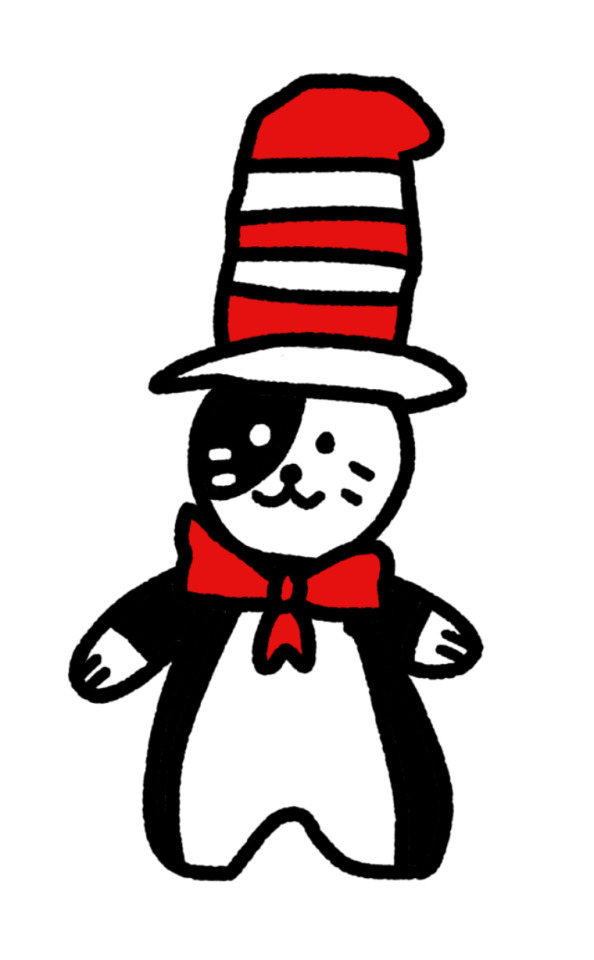
#cats of tumblr#poorly drawn cats#low quality#cats#cute cats#daily cats#funny cats#cat#artists on tumblr#cat in a hat#dr seuss#seuss#dr. seuss#bookblr#books#booklr#books and reading#book reference#cat in the hat#hat#top hat#bow tie#old books#kids books#childrens books#picture books#black and white cat
15 notes
·
View notes
Text
Become a renegade theologian, then we’ll talk.
#his dark materials#hdm#northern lights#lyra belacqua#lord asriel#asriel belacqua#books#book reference#theology
7 notes
·
View notes
Photo
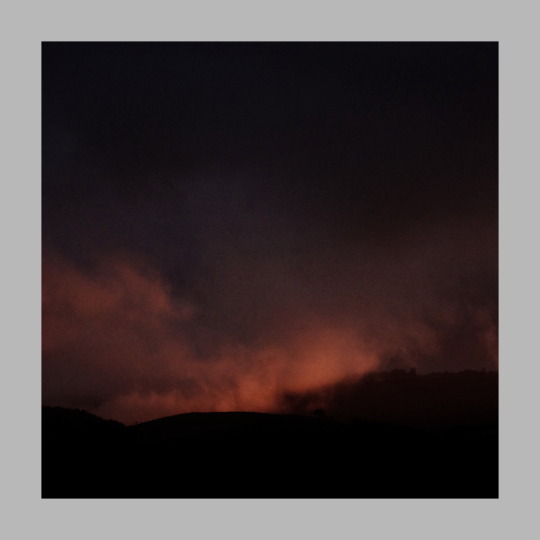
The door to the invisible must be visible...
René Daumal, Mount Analogue (1952)
#photographer on tumblr#original photography#landscape#book reference#to rread#first light of morning
270 notes
·
View notes
Note
hey im starting class 11 in cbse and im doing neet as well (supporting the masses frfr)
the thing is im switching from another board and i have no clue on where to find cbse and neet past year papers bc for at least neet theyre all solved so wld be great if you had any links handy :)
hi! good luck on starting class 11 as well as preparing for NEET ♡ doing both can be difficult but if managed well, will definitely become easier. i have divided this post into multiple sections depending on the kind of materials you require. they have been linked as well so that it is easier for you to find. if you'd require any further help, always feel free to reach out! all the best once again!
(the main focus area of each section is in pink bold and the link of each material is in red bold)

𖤐 FOCUS — NEET [MCQ BOOK SETS COVERING 11TH AND 12TH]
• Physics Wallah Full Course Study Material Set (Physics, Chemistry & Biology — 15 Books for Classes 11 & 12) Includes PYQ with Answers (NEET 2024 Edition) [MCQ's Only] — Click Here
• MTG Objective NCERT at your FINGERTIPS For NEET - Physics, Chemistry, Biology (Set of 3 Books) [MCQ's Only] — Click Here

𖤐 FOCUS — CBSE SAMPLE PAPERS [SUBJECTIVE QUESTIONS]
• Oswaal CBSE Sample Question Papers Class 11 For
Chemistry Physics Biology

𖤐 FOCUS — BOOKS FOR THE THEORY PART [NCERT & IT'S IMPORTANCE]
• For Biology, please only just refer to NCERT. Nothing else is required. Keep your reading sources limited, simply practice from different books. For NCERT Biology book Click Here
• For Chemistry, make sure to go through the NCERT Chemistry book thoroughly because questions are given directly from the solved examples. For NCERT Chemistry book Click Here
• For Physics also, same as Chemistry. go through the NCERT throughly because the solved examples from there are really important. For NCERT Physics book Click Here

𖤐 FOCUS — OTHER REFERENCE BOOKS [FOR NUMERICALS PRACTICE]
However, for Physics and Chemistry, NCERT isn't enough for practice. So you can refer to other reference books for solving numericals. (the best and most recommended given below)
• For Chemistry Modern's ABC Dr. S.P. Jauhar
• For Physics New Simplified Physics S.L. Arora
8 notes
·
View notes
Text
annabeth saying “you’re lucky we’re letting you keep your head dummy” TO CRUSTY
#CALLBACK#BOOK REFERENCE#I JUST ABOUT PISSED MYSELF#deep cut lowkey#percy jackson show#pjo#annabeth chase#percy jackson
16 notes
·
View notes
Text
Magician Aziraphale is back!!!! Yes yes yesssss

#just don’t call him a slur please#book reference#good omens book#good omens#good omens season 2#magician Aziraphale#go s2#magician#micheal sheen#Aziraphale#inefabble husbands#inefable#aziracrow#jupiterslifelessmoons
37 notes
·
View notes
Text

from the march west by karen solie, published in pigeon
[Text ID: it's terrible, what a person can think up, and want. /End ID]
330 notes
·
View notes
Note
Is there a full picture from the pattern book to see and what pattern book are you using?
I have been using the first edition of this pattern drafting book (in English units); Hanfu Pattern Making by TT Duong. I have not been posting full info from the book since 1.) I paid for the book 2.) I'd like others to pay for the book (at least ebook).
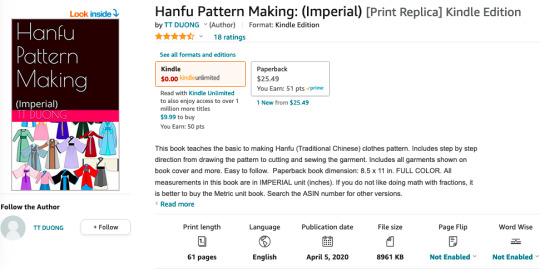
There is also a paperback version as well, and apparently a second edition now. Here is the metric version.

I would highly recommend the ebook since there are varying quality issues with the paperback versions. This book assumes a lot of things, so it helps to have a base level of sewing knowledge. You have to read between the lines and make some calls yourself to have things fit better. Hence, I blogged a lot of my changes as I went here.
This group based in Toronto has a free guide, but as stated previously, I suspect this was written by an engineer without prior sewing knowledge.
https://torguqin.wordpress.com/hanfu/hanfu-tutorial-list/
Youtube has some more resources as well:
Claire Yuxian Zhang hardcore historical sewing techniques!
Avenue X (though not at detailed as CYZ, her focus is on cdrama land)
And even though his are Korean, a lot of the techniques are similar like sewing the sleeves and whatnot. Plus, fashion is never in a vacuum and different countries and styles influence each other all the time. I'd suggest checking out;
Cheon-Shik Yang 천식 양
Keep in mind a lot of the xianxia/wuxia outfits are very whimsical and not historically accurate so looking at a lot of resources that are different would help. The pattern making book is most helpful when it comes to estimating the yardage.
120 notes
·
View notes
